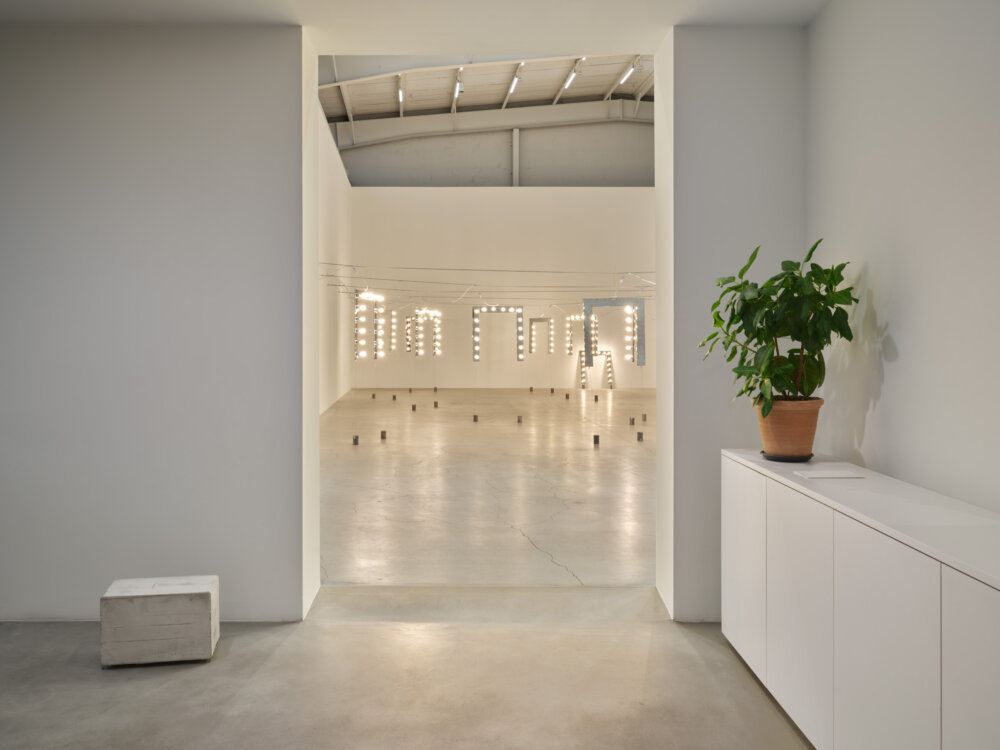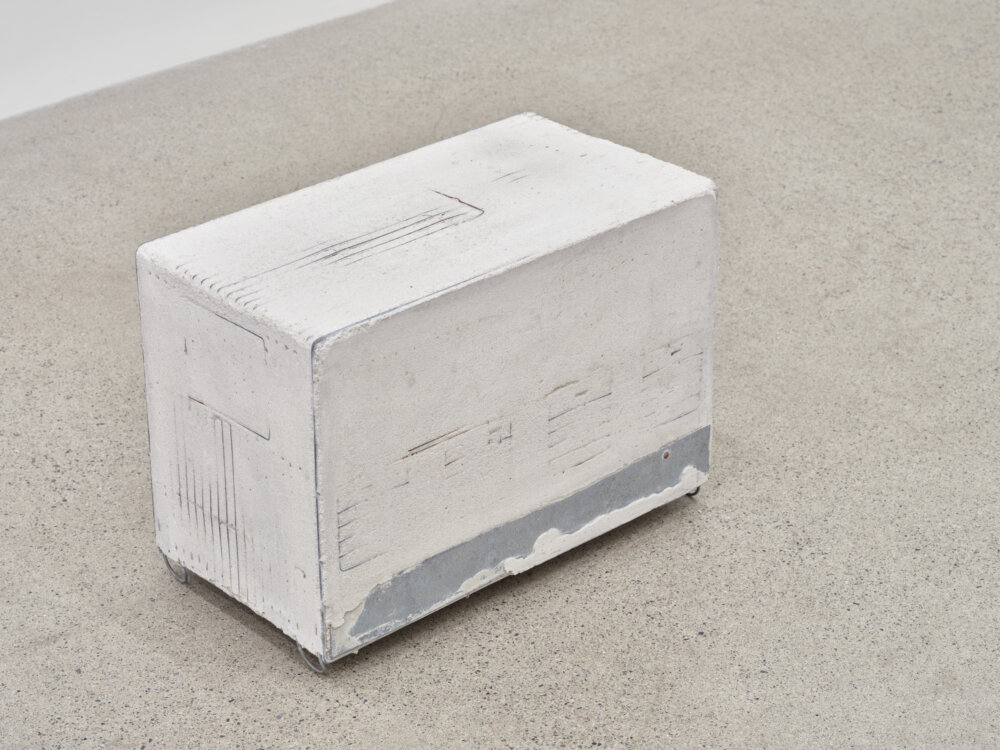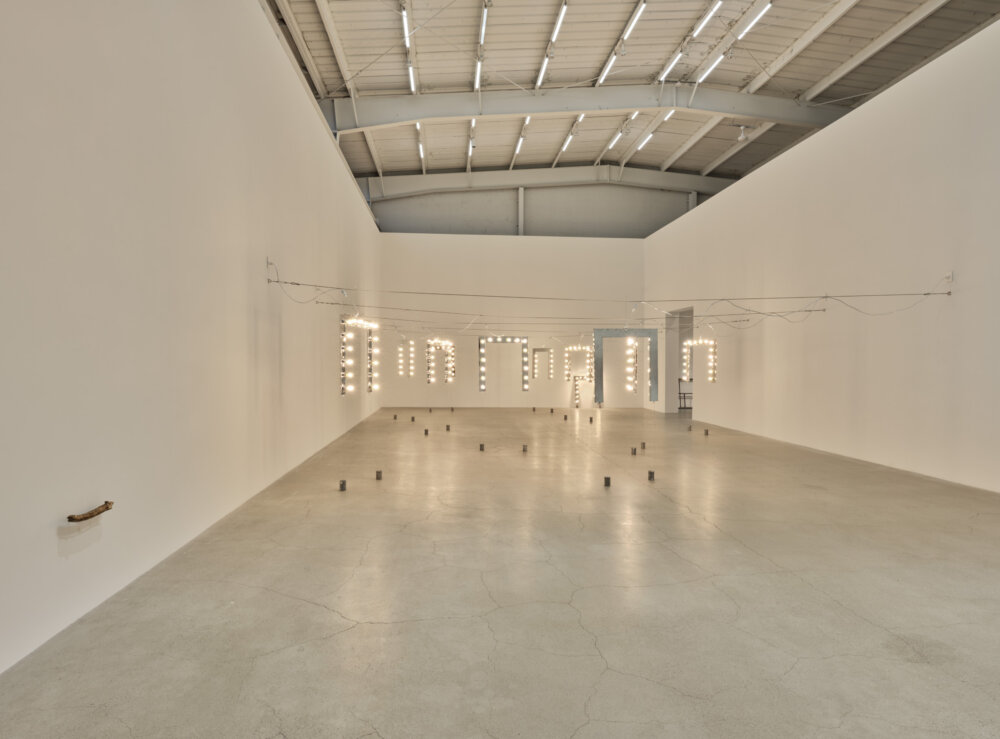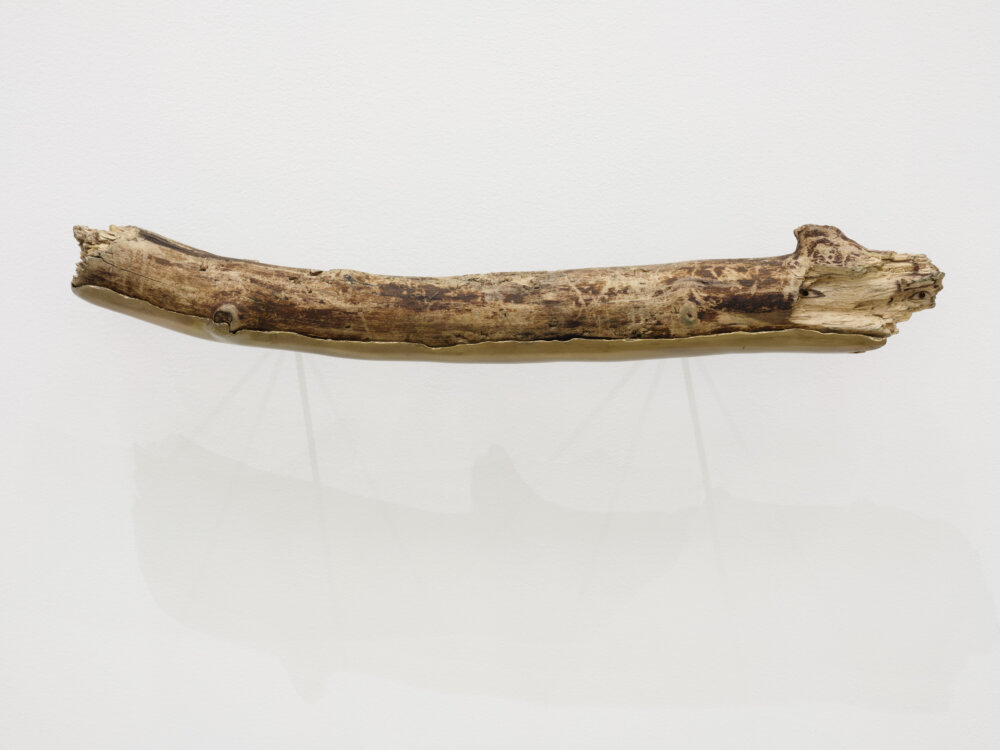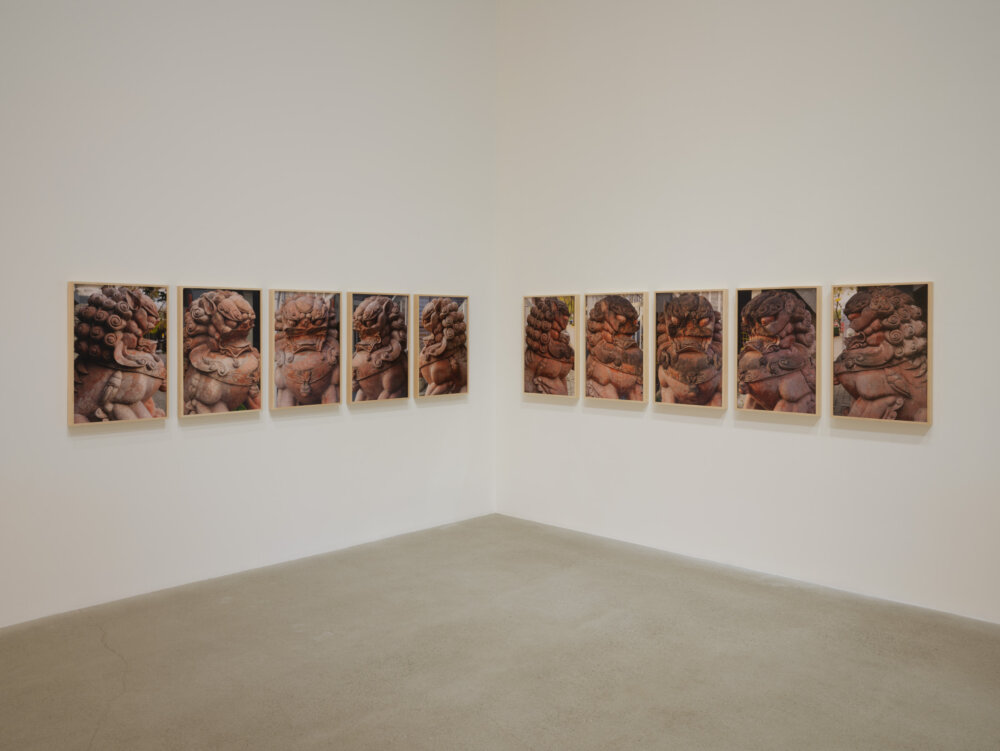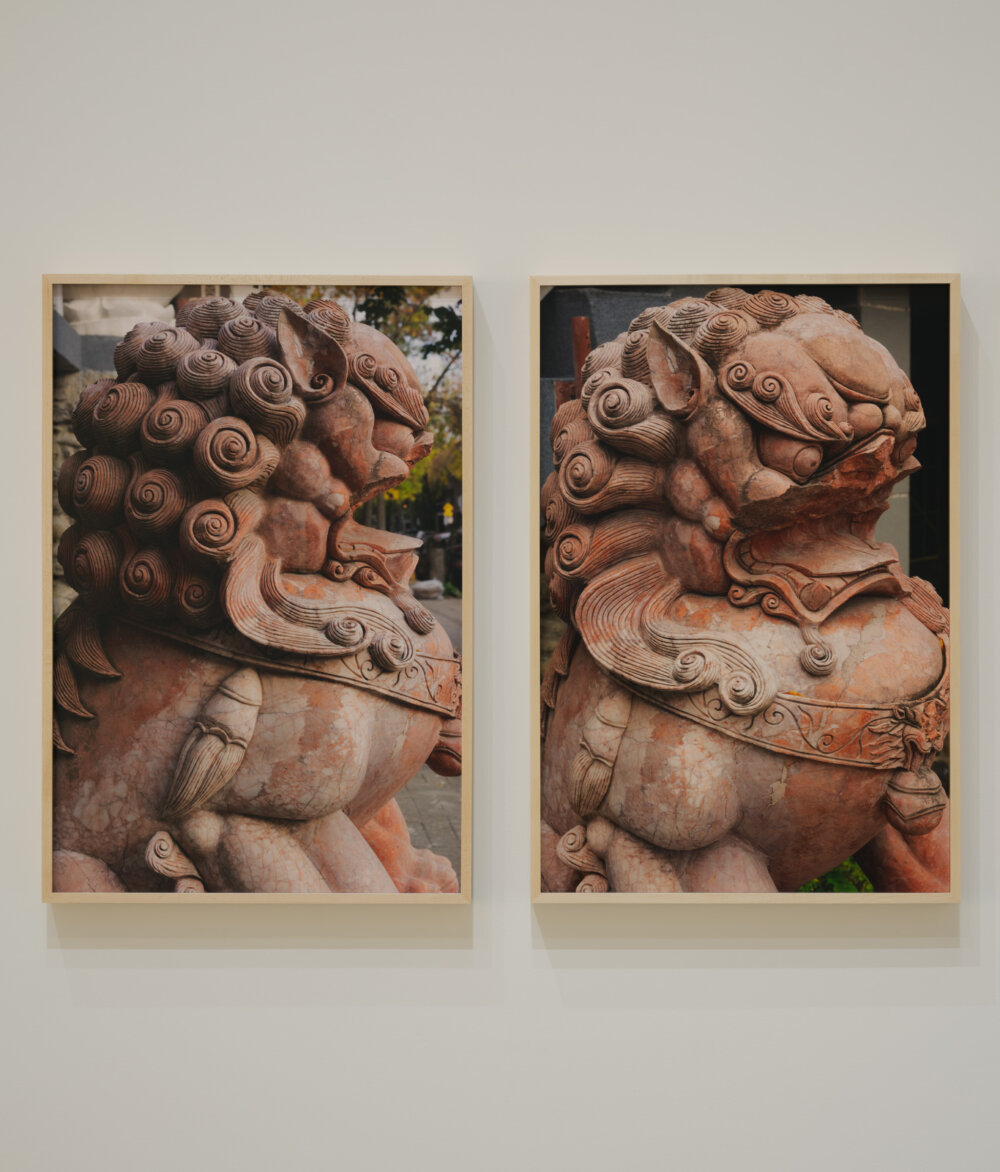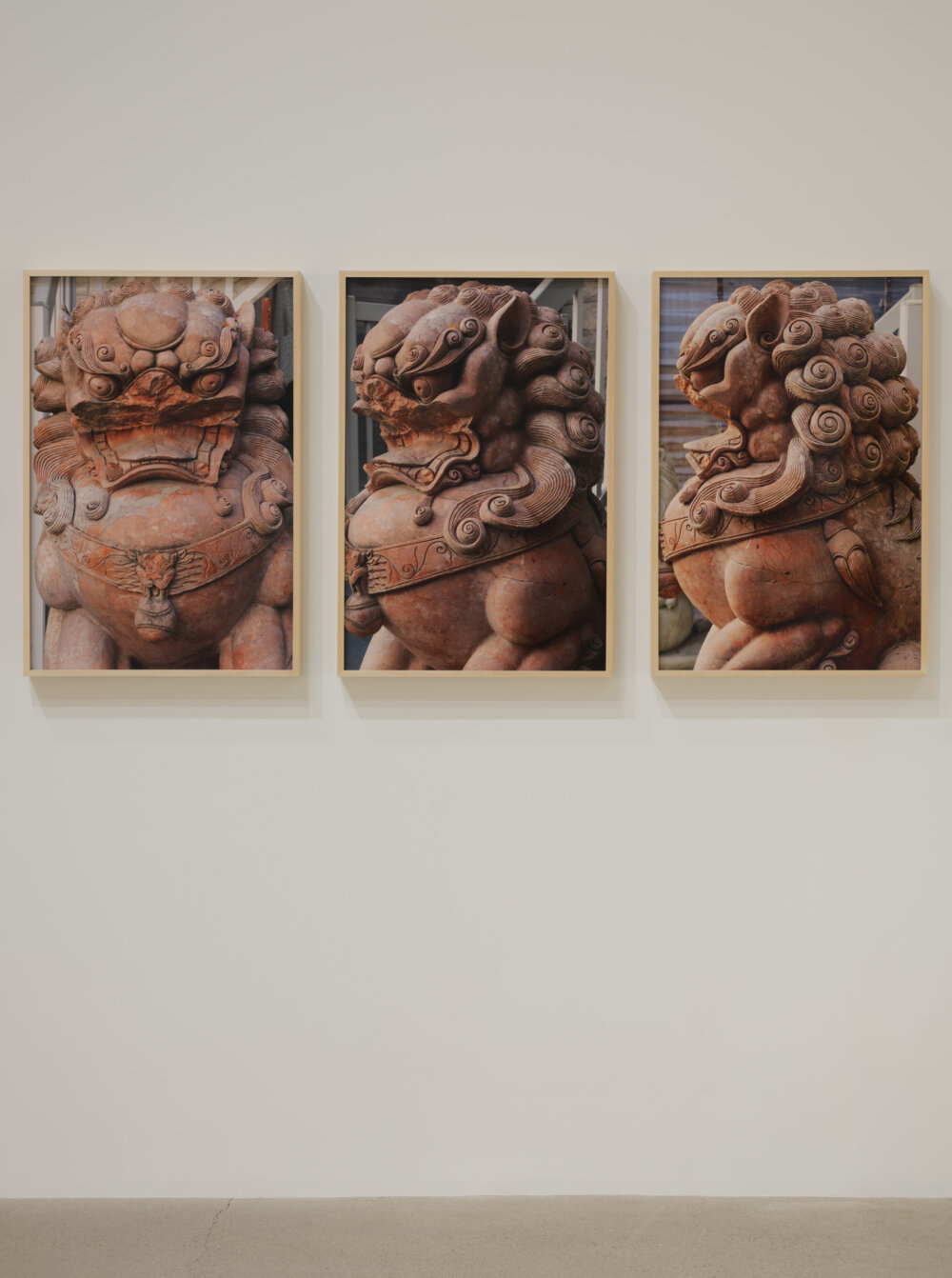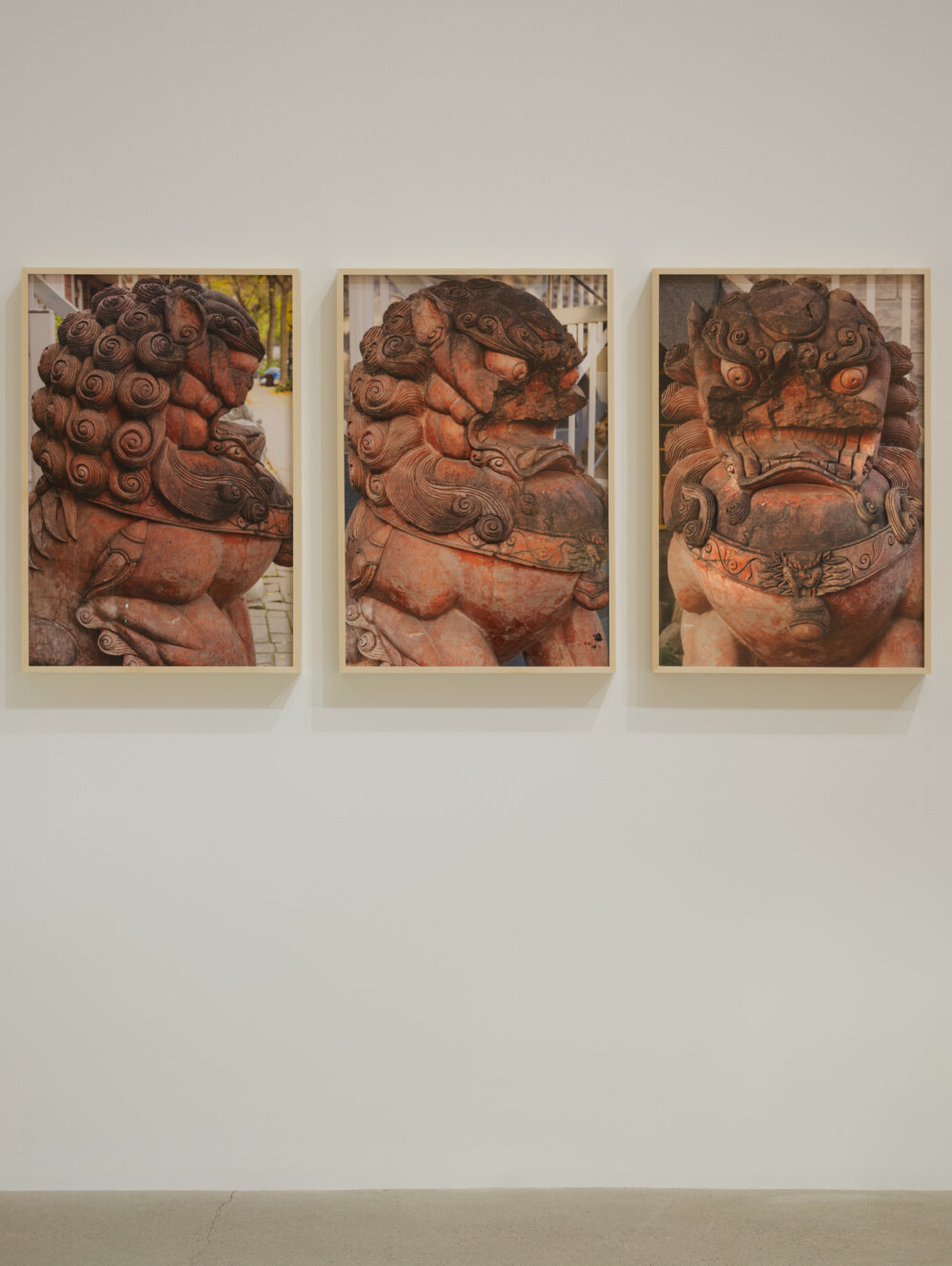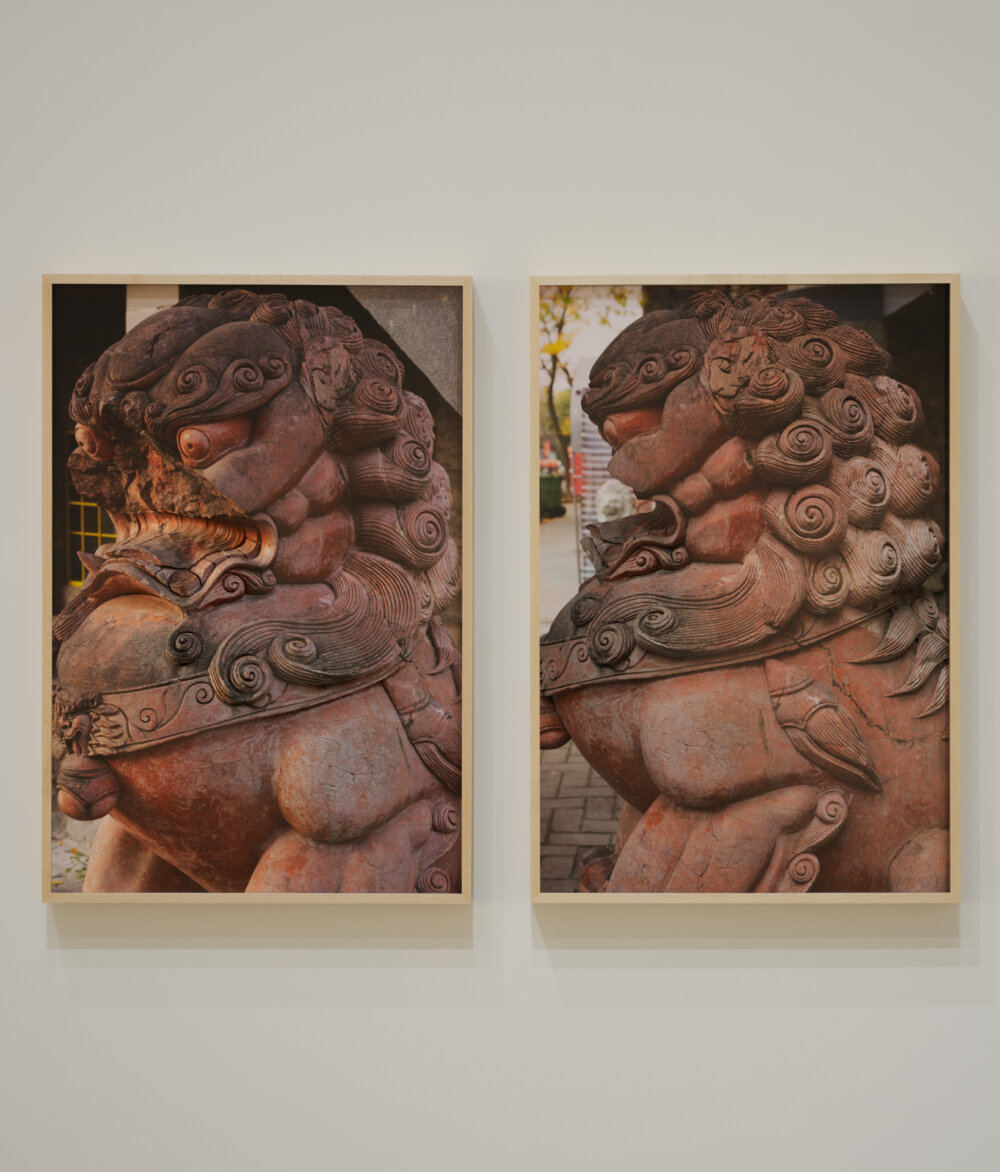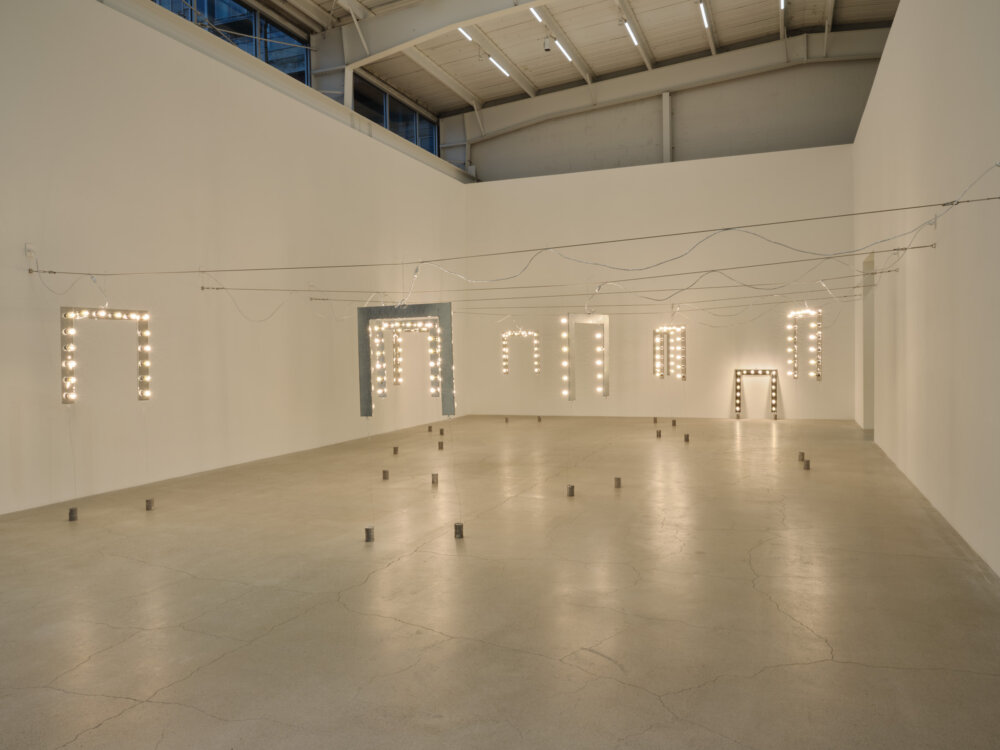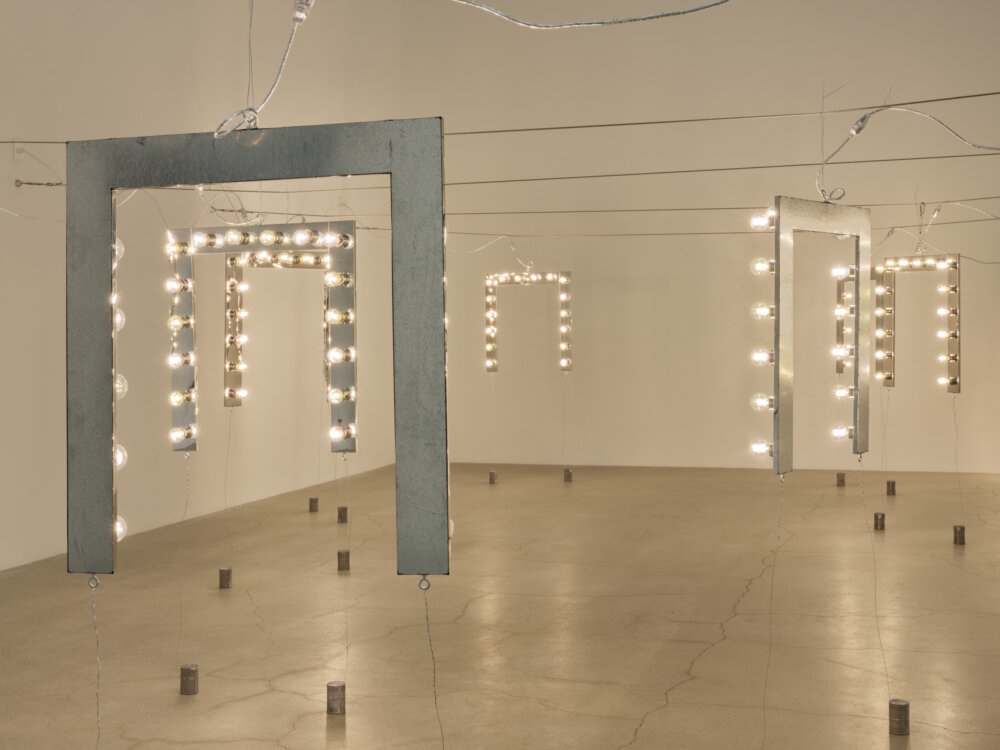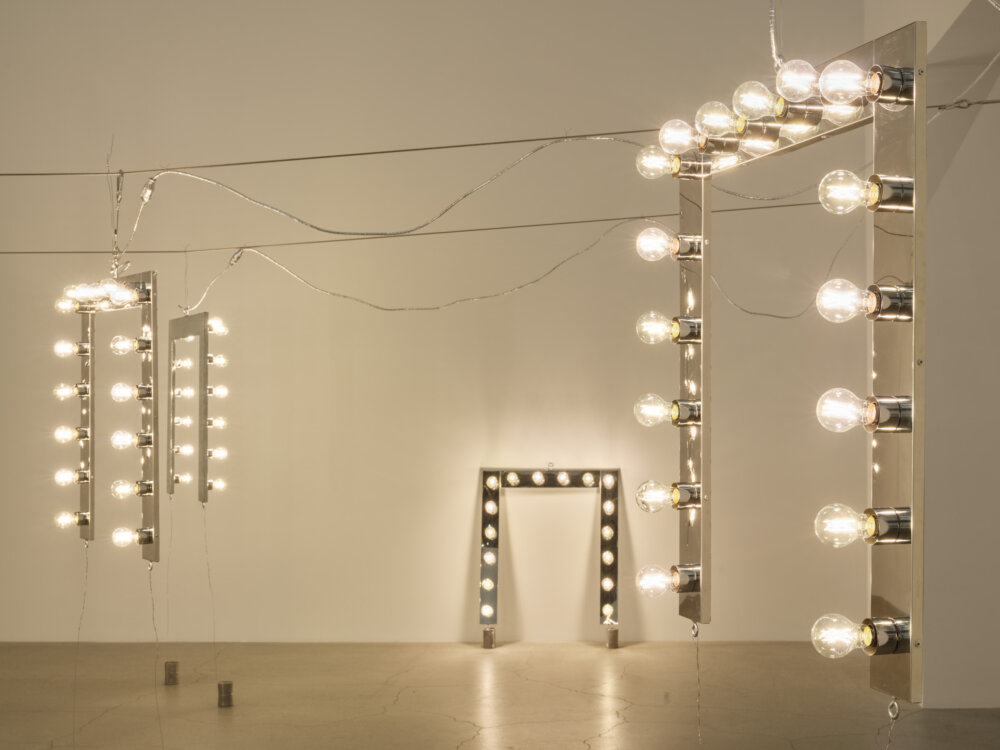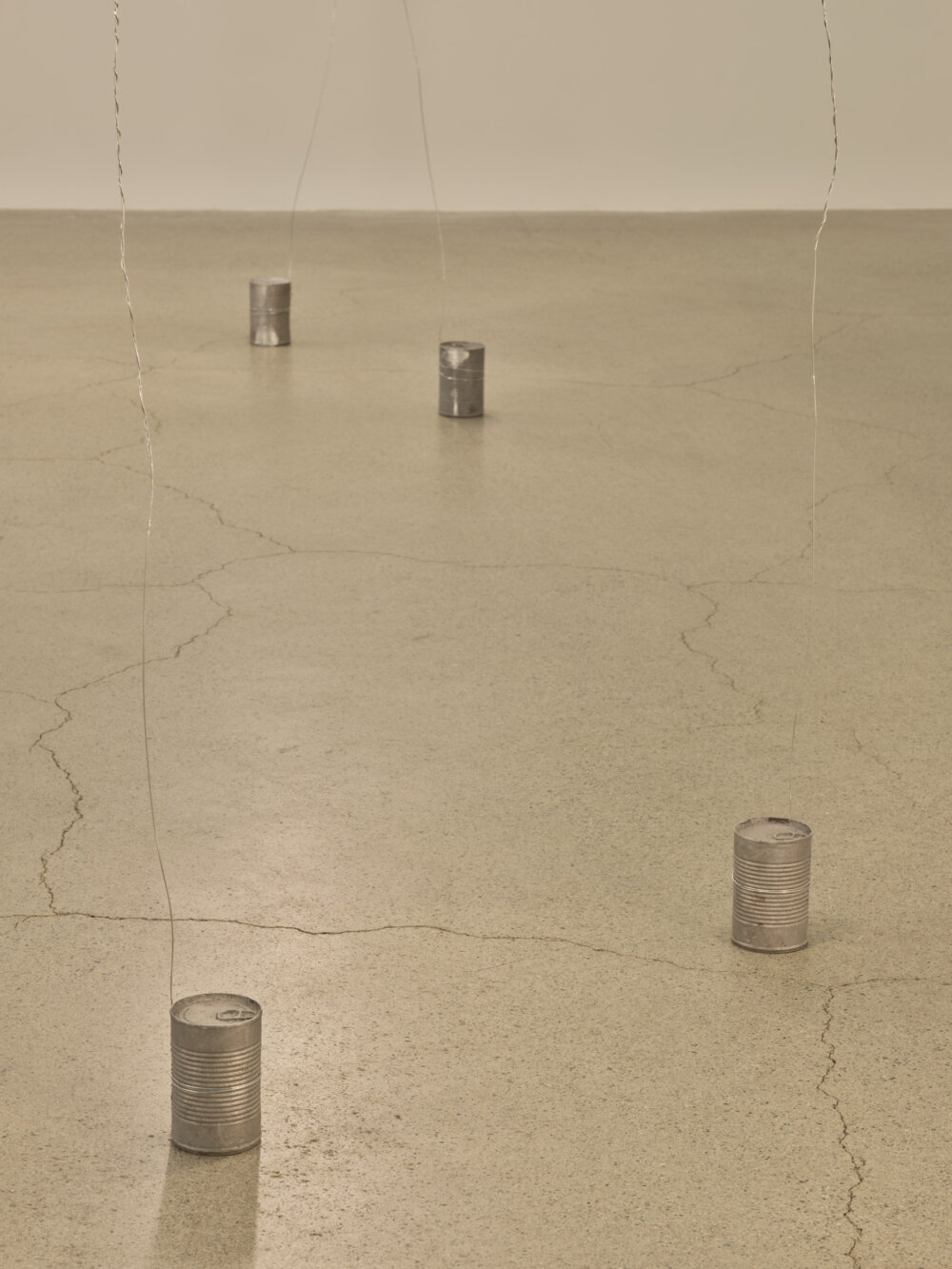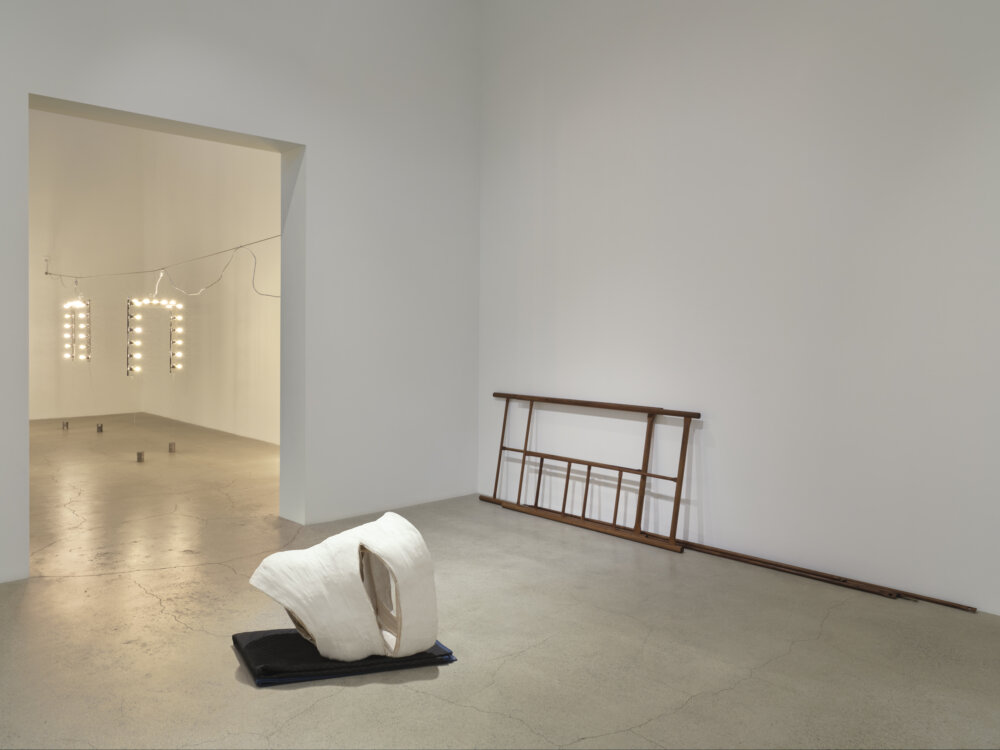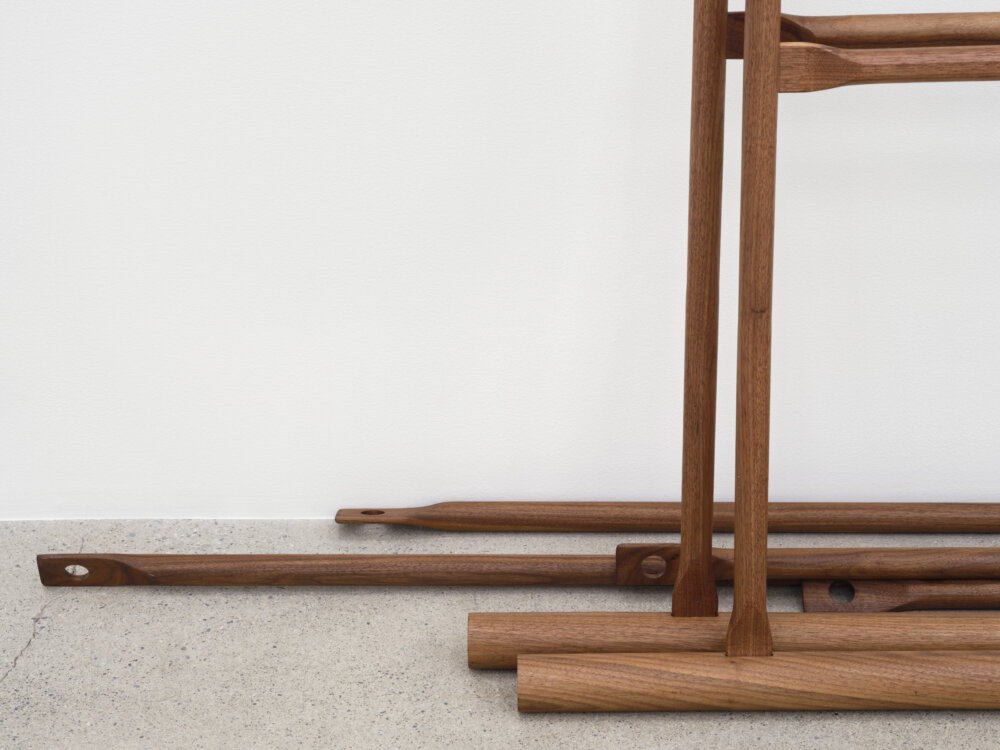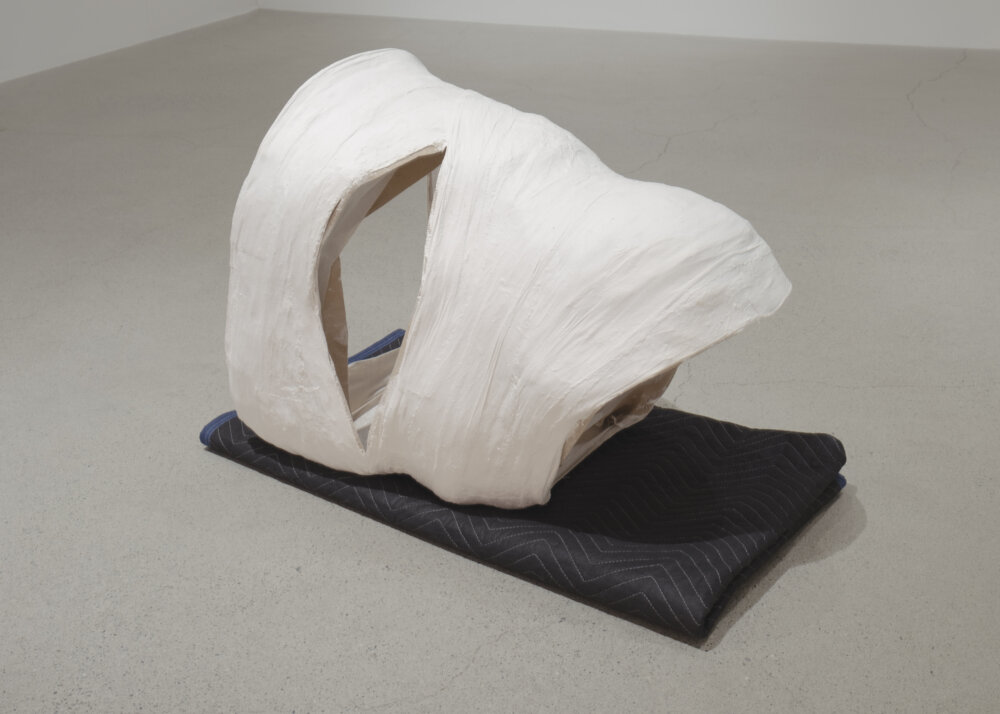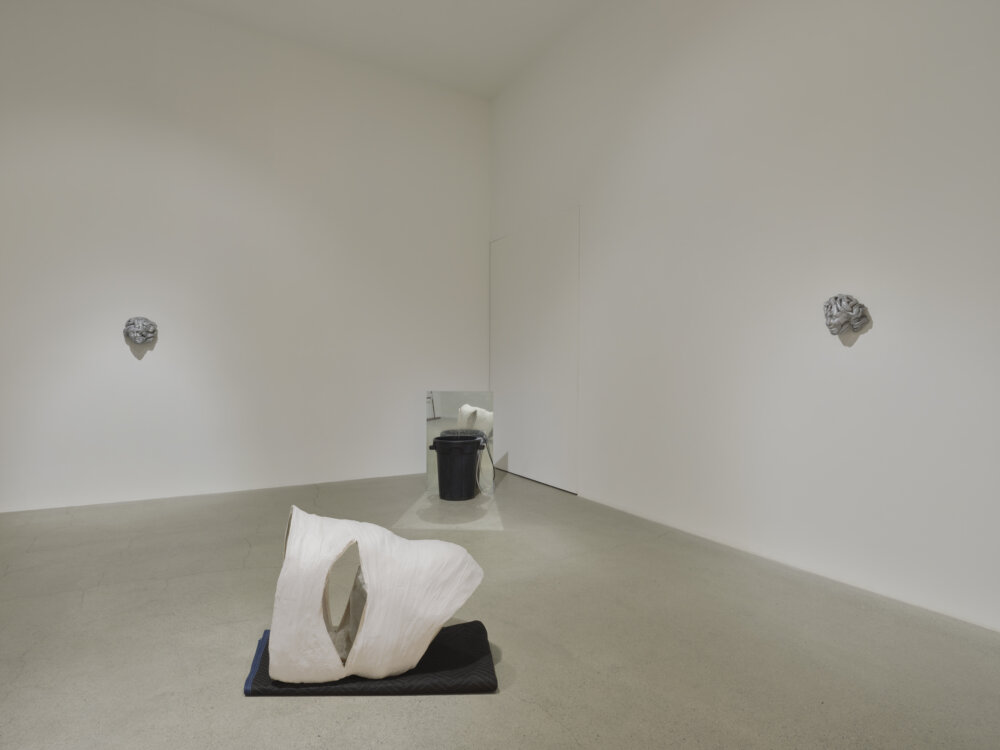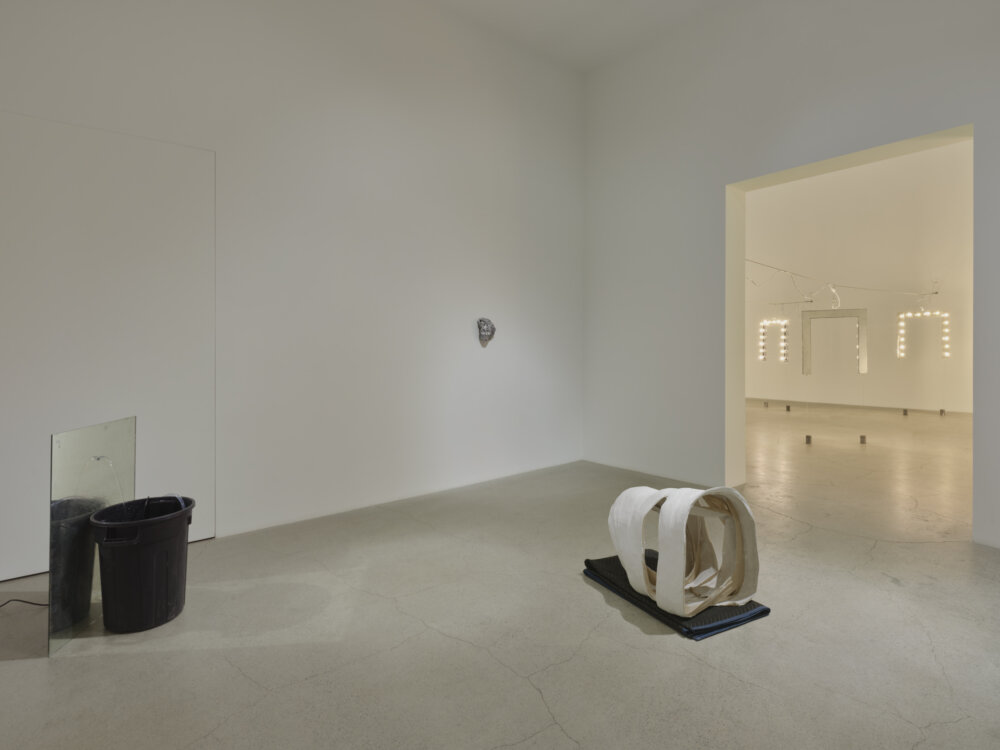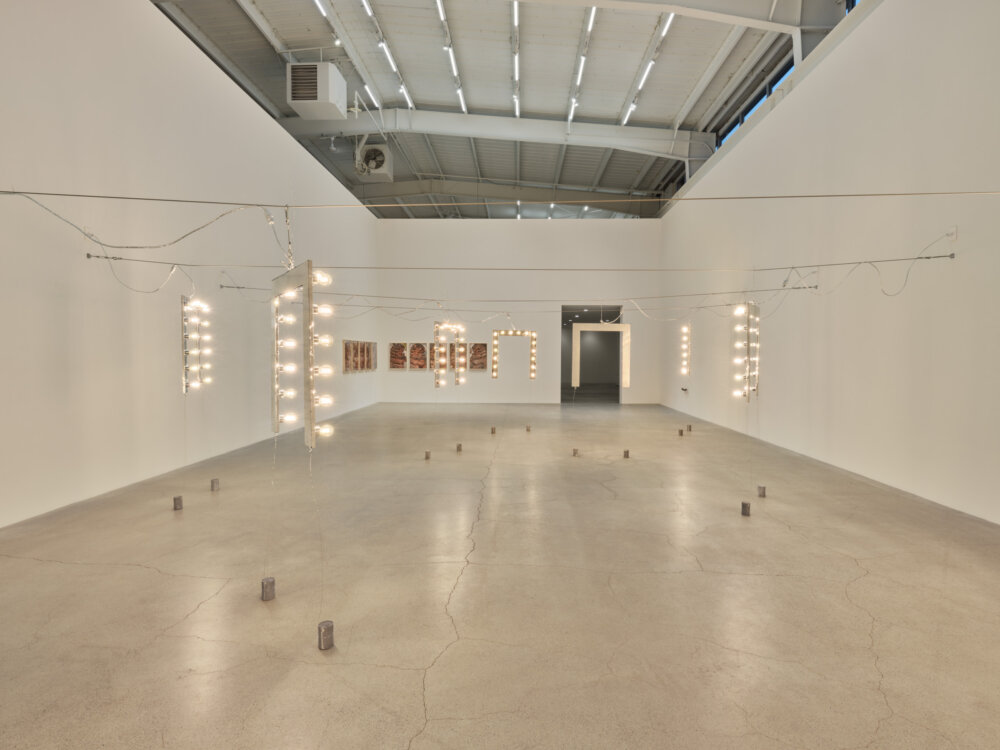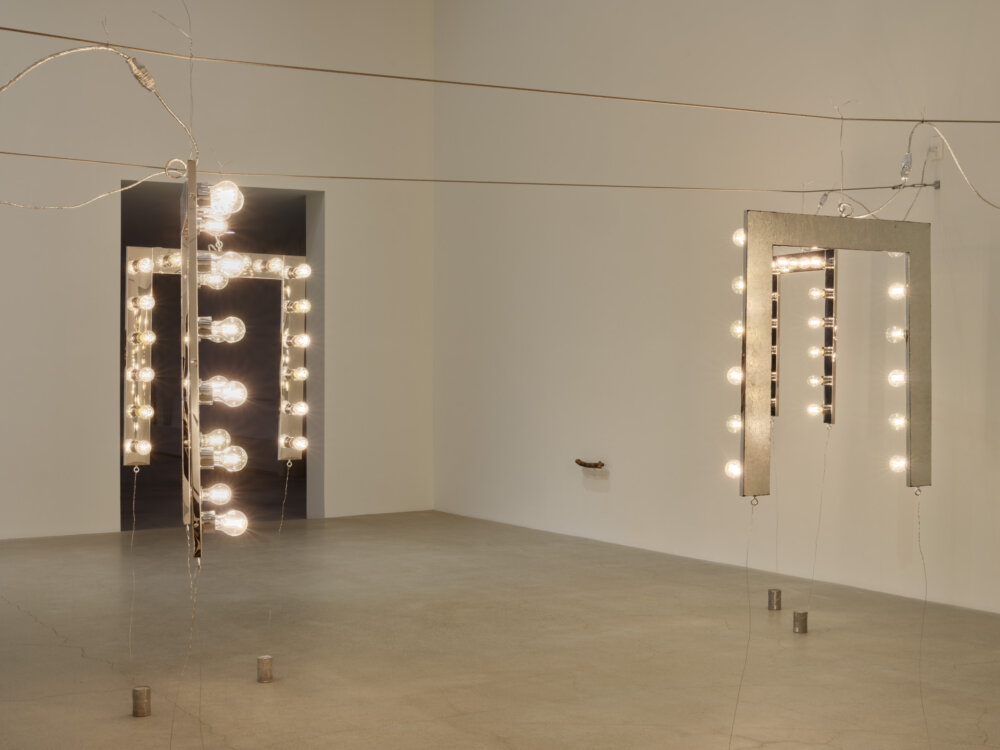Abbas Akhavan, Rochelle Goldberg
Disembody
November 30, 2024–January 25, 2025
Domestication is often understood as a long-term and mutualistic relationship in which one species provides care and security in exchange for a steady supply of resources from another. But the ways in which such a relationship redefines the other’s very nature—such as the genetic transformation of wolves into dogs—tends to leave the question of mutualism hanging in the air. In Disembody, Abbas Akhavan and Rochelle Goldberg approach this question by removing the human to consider what remains within the equation of domestic life.
In the form of a shepherd’s crook or hunter’s spear, a tree’s discarded limb becomes a human prosthetic, establishing nature as a continuum of our bodies and will. Perhaps more than any other object, the stick exemplifies this interrelationship. Akhavan’s IT (2024) comprises a dog’s fetching stick held aloft within a custom brass mold. But to whom does this stick belong? Frozen in the moment of selection when the driftwood became a gesture of play, this now permanent suspension hovers somewhere between withers height and arm’s length, held at a remove from teeth, tools, and tides alike.
Nearby, ten images of stone lions (also called fu dogs) resolve into two distinct figures, each photographed from the perimeter of a 180° semi-circle. There is a point within the overlapping arcs where both lions confront you head-on, their disfigured maws agape. It’s this stone snarl that not only reveals the remnants of canine incisors, but allows a view down the throat into the rough interior of the stone within. Disfiguration exposes the stone as it once was, before patient hands sculpted an animal seated in protective watch. We can guess at the intentions of the vandal as much as we can speculate as to what the lions are guarding—in both instances we draw from animal mythos to grasp human cultural signifiers, the spiritual deployment of lions, and the hateful displacement of pandemic-era fear. First through vandalism, and again through artistic dislocation, the craft of metaphor is waylaid by the reality of rock, which Akhavan rearranges in introspective alignment like a megalithic circle.
In Bright Lights (2024), Rochelle Goldberg suspends ten vanity mirrors above the gallery’s floor, their lights refracting theatrical shadows around the room. Adrift on their individual axes, the installation almost has the feeling of an oversized orrery. But lacking a sun or central orbit, each glaring bulb becomes its own burning star, and the viewer, in turn, gravitates toward them. These too have been defaced, and instead of reflecting an actor’s gaze, the mirrors spotlight their surroundings. The multiplication of objects rather than images is uncanny; where there would be an illusionistic reflection of the gallery walls, there is only the actuality of architecture: portals to nowhere. Instead of finding a familiar face, one encounters closed canisters beneath each mirror. As aluminum casts, their propagation only furthers this logic of disembodiment: the absent body becoming more present the less it appears. What remains is a hall of mirrors where the viewer is confronted by an undoubled self.
Goldberg’s Composite Icons I and II (2024) offer some solace in the form of portraits rendered in dull silver, like molten mirrors pressed into illustrative relief. And yet, these fair effigies quickly give way to snakeskin coils, writhing beneath the partial configuration of the face. Is this what happens when Medusa gazes upon herself, whereby all humanness sublimates to an iconographic surface, while the body returns to inert material? Nearby, Akhavan’s If the first metaphor was animal (2024) gives a name to this operation. How can we know ourselves without an other to be known in relation to? What have we done to each other that we have not done to animals a hundred times over? With a bandage wrapped around a rhinoceros snout, the sculpture first portrays the absence of the creature’s distinctive horn, and then the absence of the rhino itself, leaving only the plaster dressing behind. But this absence is charged, immediately reminding us not only of the poached ivory, but of all the precious resources extracted to serve purposes of adornment and conspicuous consumption. Something throbs between the missing horn and the frozen stick. What differentiates tame animals from trophy beasts other than human desire? Goldberg’s Composite Icons remind us that this relationship is not only inter-species but intrinsic—that animal symbolism is fundamental to our knowledge of ourselves. We are already the other.
Throughout Disembody, the human recedes, leaving bestial traces behind. This is not to say that humanness is an elaboration, much less a transcendence, of the reductive animal. In fact, it is the opposite. What can we know of our animal kin that is not merely a projection of our own myths, values, and behaviours? The remnant objects that constitute this exhibition behave as amputated signifiers, disillusioned mirrors—where evidence of careful craft and machinic precision are found in equal measure, offering occasional glimpses of coarser material within. In these works we perceive the human body, made all the more visible through disembodiment: our use of tools and metaphors, the discipline of domestic rituals, and our dependence on creatures that are simultaneously subordinate and sacred.
Documentation by Rachel Topham Photography.
